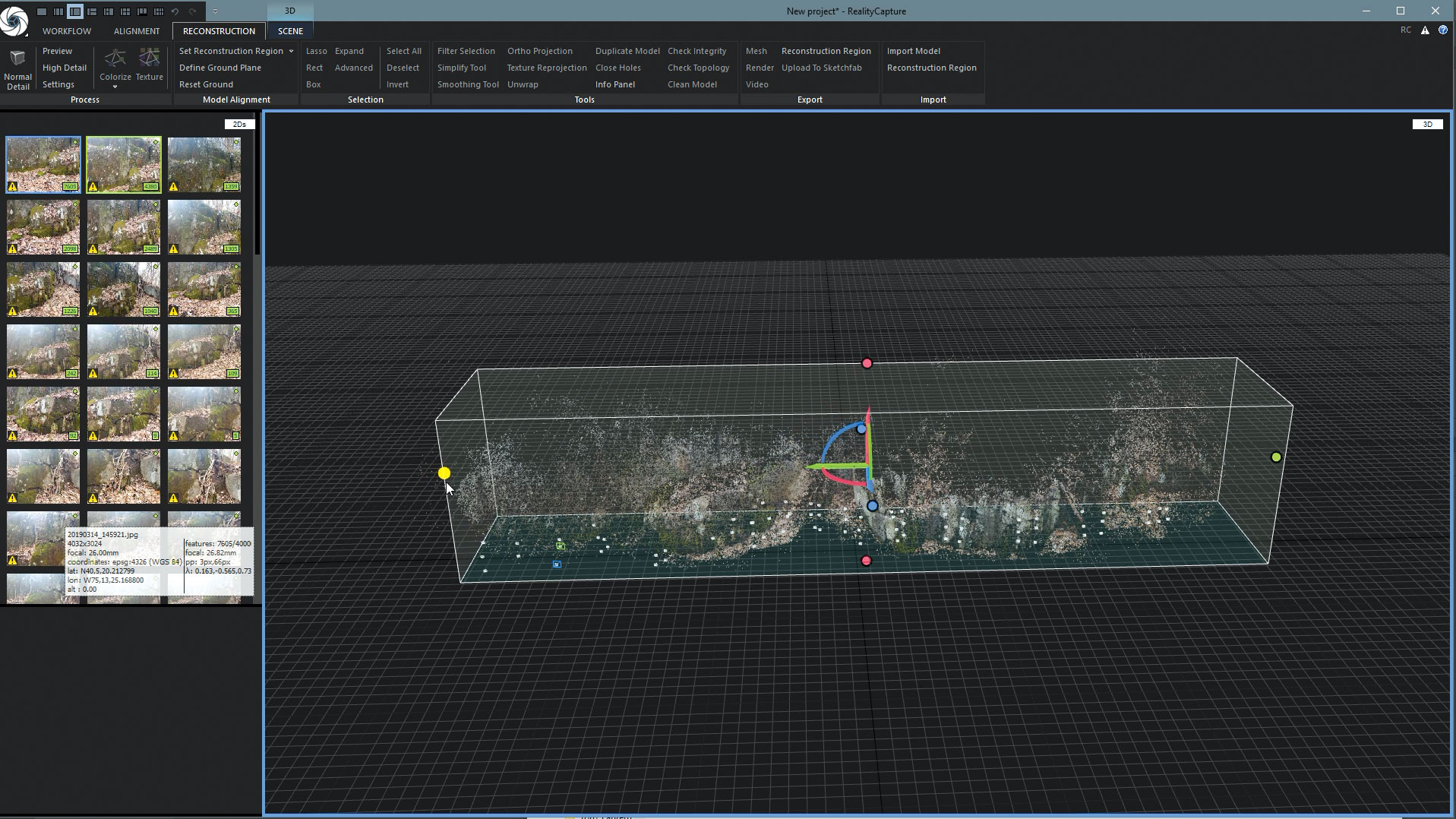

My only other comment is that changing the settings can be fiddly. You can import control points, but not click in a photo and scale, at least as far as I’ve seen yet. One feature I would use that I haven’t come across is scaling based on a known size in the image. There’s a bunch of features in Reality Capture that I haven’t had time to play with, or that I don’t really have any need for. If you view just the vertices, everything looks much cleaner:Īnd a top view gives you an idea of just how well this complex shape (including ribs and armature) was reconstructed, which is double impressive given that the place it was mounted made it difficult to photograph from one side:Īnd here’s a close up view of those verticies: Other comments: High or preview weren’t noticeably different from the default settings.īUT! Turns out it’s just the mesh that looks messy. The result looked… a bit messy:īetter textured, but still not great. Just 10 minutes (593 seconds) from start to finish (so in fact only ~twice as long as the styracosaurus model dataset). I have managed to make a model of this in the past (obviously – it’s used in the paper), but it was a massive pain in the rear, because the conditions weren’t great for the photos.Īnyway, Reality Capture made light work of it. So I decided to test a larger dataset – 218 photos of Neuquensaurus, used in a previous paper on Sauropod body mass.

One thing Capturing Reality claim about Reality Capture is that doubling photos only doubles processing time, whereas in other packages, you’ll see an exponential increase in time taken. You can see here it’s only using about 8GB of the 16GB RAM available, and neither the GPU or CPU are being maximally taxed.įrom the testing with this dataset at least, it doesn’t seem like there’s much benefit going above default settings. Even after a couple of smoothing passes, the model didn’t get much better:įor the record, this is what system usage looked like during high reconstruction:Ī big selling point of Reality Capture is that it’s easy on resources. Meanwhile, the mesh was considerbly larger in vertex/poly number and consequently file size (High was 1.66 GB, but default was 480mb). It suffered from an awful lot of noise, and horn lost a bit of fidelity. But the mesh wasn’t actually better than default: High was a different kettle of fish… Total time taken (not including texturing) was 24 minutes.

Texturing (4096×4096) took 78 seconds, but turned it into something highly useful for visualization purposes: High Settings: That’s right, a fully coloured mesh in just 15 seconds! It didn’t look great, mind:īut then what do you expect for 15 seconds worth of processing? Colourising verts looked similarly ‘draft-like’: I also tried Reality Capture’s reconstruction on low and high settings: Low Settings:įor Low, I ran a draft alignment (14.5 seconds), then a ‘preview’ quality reconstruction (0.944 seconds). That being said, some of those options have improved since I last tested them, so I will review this comparison again in the not too distant future. Reality Capture really is about 10x quicker. To put that in perspective, last time I tested COLMAP with this dataset, it took 50 minutes! COLMAP + OpenMVS took 37 minutes, and Meshroom took 45 minutes. All 53 cameras were matched, and there’s not a lot of noise around the horn (which is usually problematic), and the (shiny) brass plaque was good too:Īs mentioned at the start, the whole process took about 6 and a bit minutes.

So, the reconstruction looks great, very complete. The textured model looks as good as the coloured mesh, to be honest, hence why I didn’t include texturing in the headline time-taken. That took 205 seconds, or a little over 3 minutes, for a 4096px texture. Texturing is accomplished via a button on the top bar under ‘reconstruction’. This mesh isn’t textured, it’s just using coloured verticies. Then I click the start button and leave the reconstruction to it, hoping I head to the folder button in the top left, select myįolder of images of the styracosaurus model, they load (almost instantly), and * on default, on my test machine Default Settings Time to reconstruct Styracosaurus dataset*: 397.262 Support, max 2,500 images per project] via their website, or you can pay £29.99 Lowest Cost: $99 (~£77) for 3 months [caveats: no Low-end version, or it’s very expensive for a perpetual license. I mean, the website clearly states “10x faster thanĪnything on the market”… but when has marketing hyperbole ever been correct? Well… now… it seems.īut, it’s subscription (which isn’t for everyone) for the And it doesn’t seem to be at the expense of accuracy/reconstructionĬompleteness either. Ok, let’s get this out of the way – Reality Capture is fast.


 0 kommentar(er)
0 kommentar(er)
